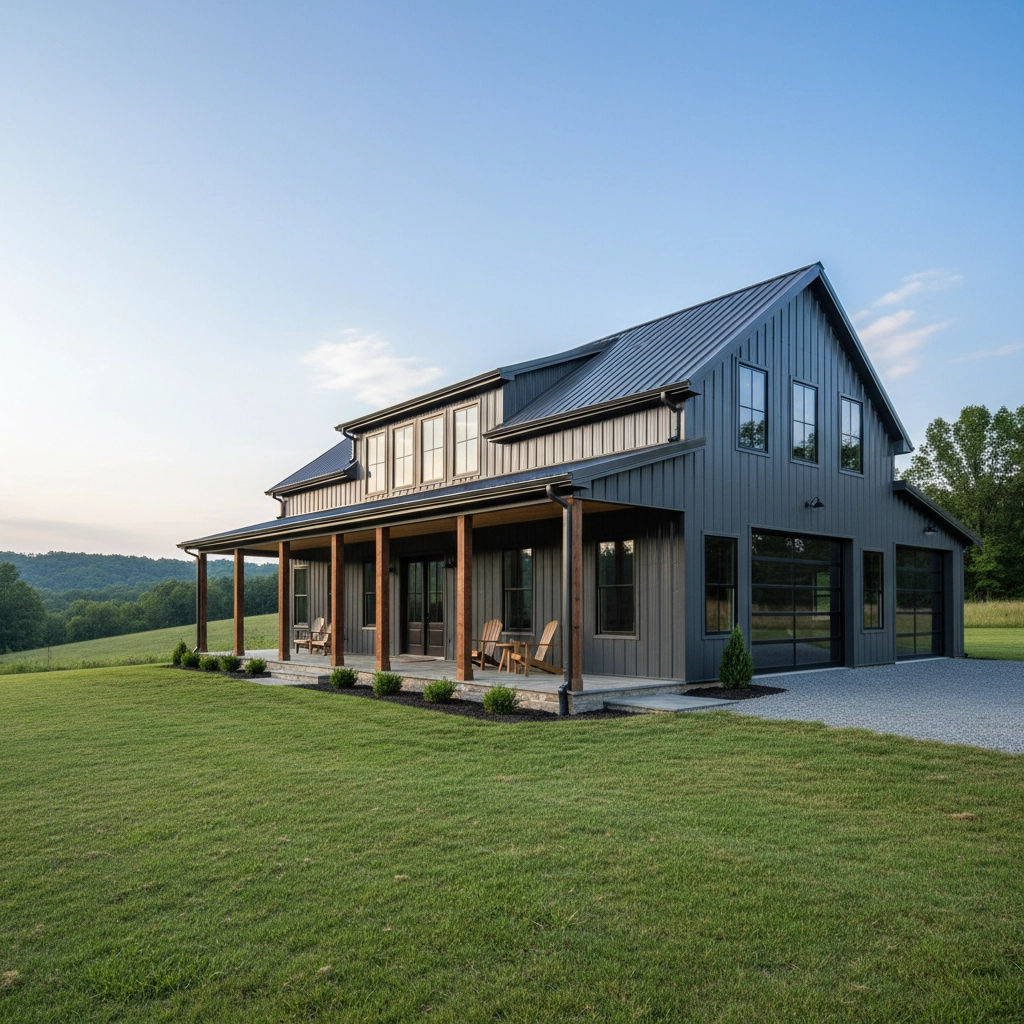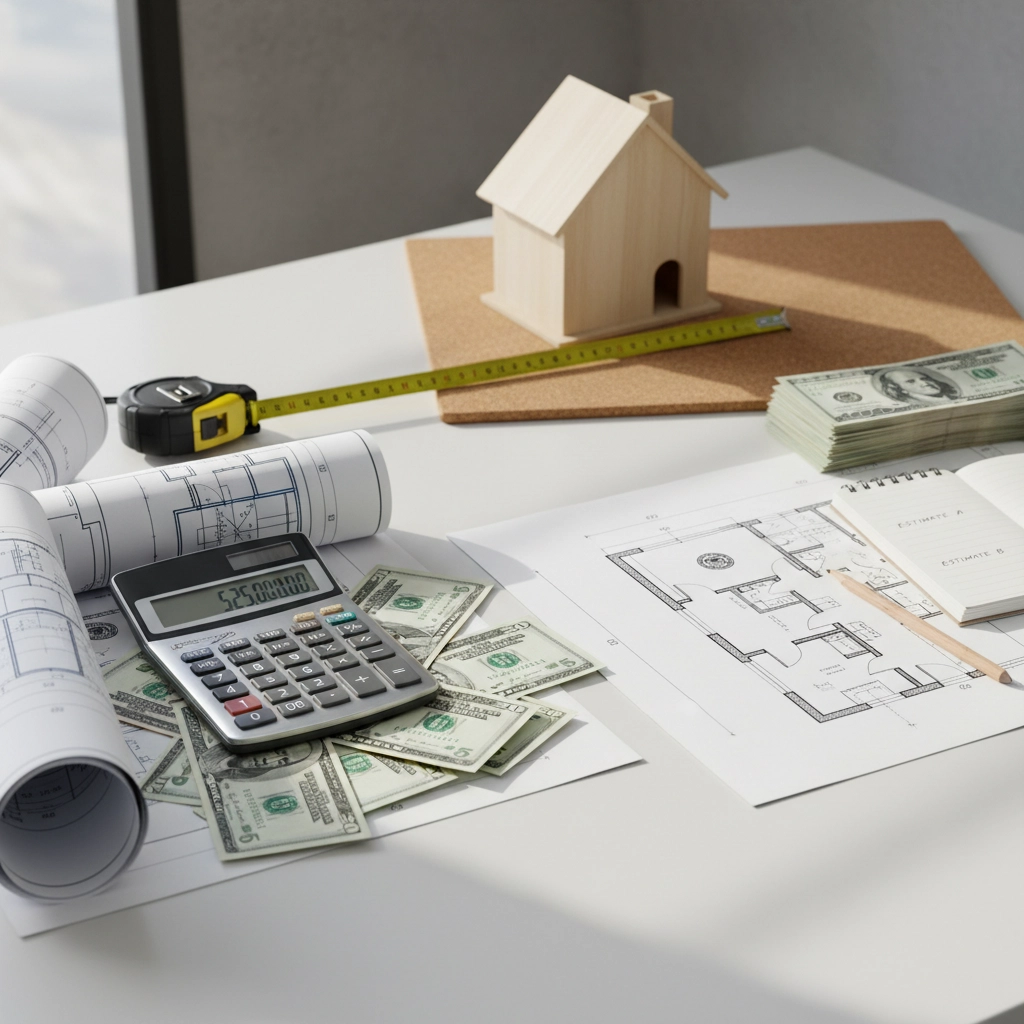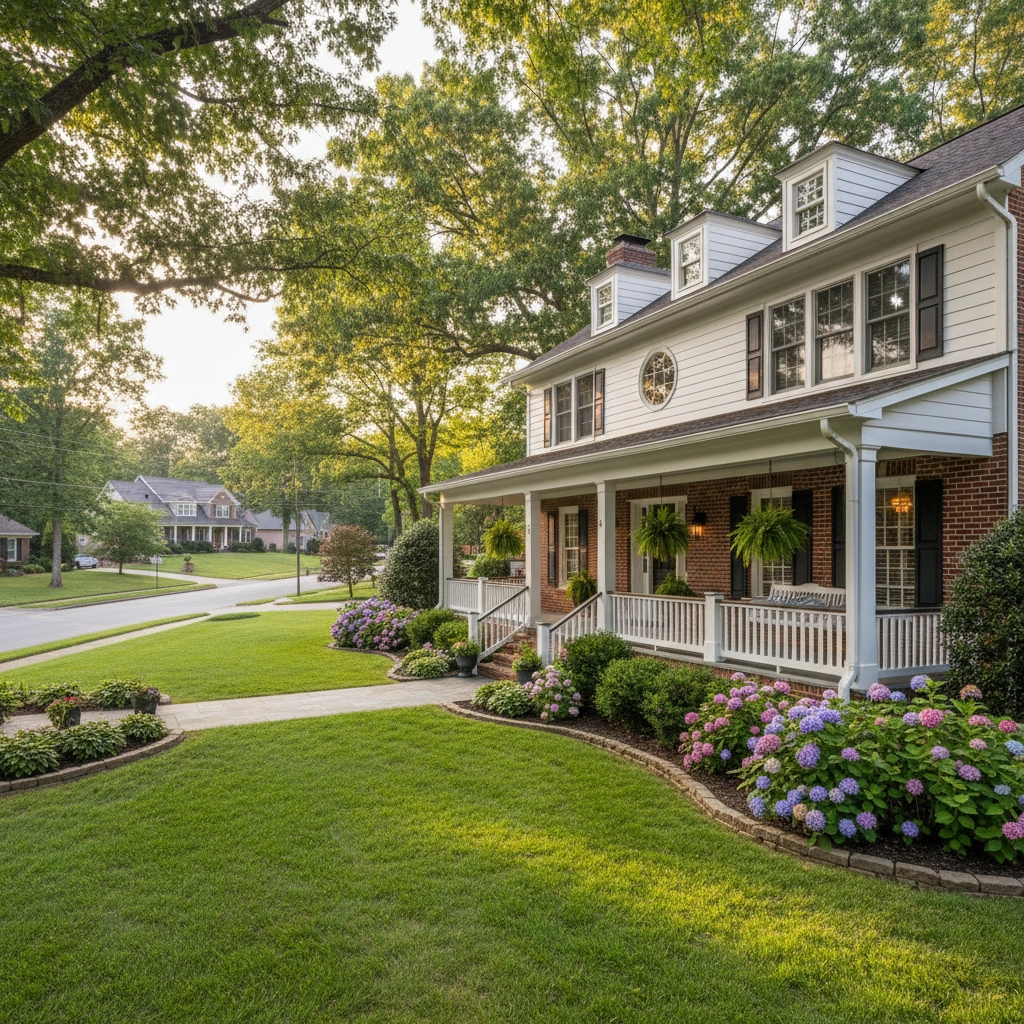
Barndominiums vs Traditional Homes: Which Is Better for Your Tennessee Investment?
Chattanooga Robert Wills October 6, 2025

Chattanooga Robert Wills October 6, 2025
When you're considering a real estate investment in Tennessee, you've probably noticed the growing buzz around barndominiums. These metal-framed structures are becoming increasingly popular across the state, but are they actually a better investment than traditional homes? This comprehensive analysis will help you make an informed decision based on real market data and investment fundamentals.
Barndominiums combine the durability of metal construction with residential living spaces, creating unique properties that blend industrial aesthetics with home comfort. Originally designed as barn-style buildings with living quarters, these structures have evolved into sophisticated homes that appeal to buyers seeking something different from cookie-cutter subdivisions.
The appeal extends beyond aesthetics. Tennessee's rural landscape and agricultural heritage make barndominiums a natural fit for many areas, particularly in counties outside major metropolitan centers. These structures typically feature open floor plans, high ceilings, and the flexibility to accommodate both residential and workshop spaces under one roof.

Traditional homes represent the established foundation of real estate investment. Built with wood framing, conventional roofing materials, and standard residential layouts, these properties have decades of performance data supporting their investment potential. In Tennessee's diverse real estate markets, from Nashville suburbs to small mountain communities, traditional homes maintain consistent demand and relatively predictable appreciation patterns.
The familiarity factor cannot be understated. Both buyers and investors understand traditional homes, making transactions smoother and market predictions more reliable. This established track record provides confidence for investors seeking steady, long-term returns.
The financial comparison between barndominiums and traditional homes reveals significant differences in initial investment requirements. Current construction costs show barndominiums averaging approximately $100 per square foot, while traditional homes range from $110 to $170 per square foot depending on finishes and location.
For a 2,000-square-foot property, this translates to roughly $200,000 for a barndominium compared to $220,000 to $340,000 for a traditional home. This $20,000 to $140,000 difference in upfront costs can substantially impact your investment calculations and potential returns.
Construction timeline advantages also favor barndominiums. Metal frame assembly typically reduces building time by several weeks compared to traditional stick-frame construction. This acceleration means faster occupancy, earlier rental income, or quicker market sale capability.
However, these cost savings must be weighed against potential challenges. Specialized labor familiar with steel frame construction may be limited in certain Tennessee markets, potentially offsetting some cost advantages during the building process.

Securing financing for barndominium investments presents unique challenges that traditional home investors rarely encounter. Many conventional lenders lack familiarity with these structures, often requiring specialized loan products or additional documentation. Some financial institutions may classify barndominiums differently, affecting loan terms and interest rates.
Insurance complications prove particularly relevant in Tennessee, where providers may initially classify your barndominium as an agricultural structure rather than a residence. This misclassification can lead to coverage gaps, higher premiums, or outright policy denials. Working with insurance agents experienced in barndominium coverage becomes essential for protecting your investment.
Traditional homes benefit from streamlined financing and insurance processes. Standard mortgage products readily accommodate these properties, and insurance providers understand the risks and coverage requirements. This simplicity reduces transaction costs and eliminates potential delays that could affect your investment timeline.
Barndominiums typically require less ongoing maintenance due to their metal construction and simplified designs. Metal roofing lasts significantly longer than traditional shingles, and steel framing resists common issues like termite damage or structural settling. These factors can improve your investment's cash flow over time.
Energy efficiency potential also favors barndominiums when properly designed. Metal framing and strategic insulation can create superior thermal performance, reducing utility costs for tenants or eventual buyers. However, proper insulation installation becomes critical, as metal construction can create thermal bridging issues if not addressed professionally.
Traditional homes may require more frequent maintenance interventions, from roof repairs to exterior painting and HVAC system updates. While these costs are predictable and well-understood, they do impact long-term investment returns.

Understanding your target market becomes crucial when choosing between property types. Barndominiums appeal to specific buyer segments: those seeking unique architectural features, rural lifestyle enthusiasts, or individuals requiring combined living and workshop space. This targeted appeal can work for or against your investment depending on local market conditions.
In rural Tennessee counties, barndominiums often align well with local preferences and lifestyle expectations. However, in suburban markets or areas with strict homeowners association guidelines, these properties may face limited buyer pools during resale.
Traditional homes maintain broader market appeal across demographic segments. Families with children, elderly buyers, and conventional lifestyle preferences typically gravitate toward traditional structures. This wider appeal generally translates to more predictable resale outcomes and shorter marketing periods.
For short-term investment strategies focused on rental income, barndominiums offer compelling advantages. Lower initial costs improve cash flow calculations, while unique features may command premium rental rates in appropriate markets. The reduced maintenance requirements also support positive cash flow over typical holding periods.
Long-term investment strategies may favor traditional homes due to their established appreciation patterns and broader resale markets. The predictability factor becomes increasingly valuable as investment horizons extend, particularly for investors prioritizing capital preservation alongside growth.
Geographic considerations within Tennessee significantly impact these recommendations. Rural counties with agricultural heritage and fewer development restrictions typically favor barndominium investments. Urban and suburban markets generally support traditional home investments more consistently.

Your choice between barndominiums and traditional homes should align with your risk tolerance, investment timeline, and local market conditions. Barndominiums represent an emerging opportunity with potentially higher returns but require specialized knowledge and carry additional complexity risks.
Traditional homes provide steady, predictable investment performance with established support systems and market mechanisms. For first-time real estate investors, this familiarity often outweighs the potential cost savings of barndominiums.
Consider your exit strategy carefully. If you plan to sell within five years, traditional homes typically offer more liquidity and predictable pricing. For longer holds or unique rental markets, barndominiums may provide superior returns despite their complexity.
Successfully navigating either investment path requires local market expertise and professional support. Whether you choose barndominiums or traditional homes, working with experienced real estate professionals familiar with Tennessee markets, financing options, and regulatory requirements becomes essential for investment success.
The Tennessee real estate market continues evolving, with both property types finding their place in different segments. Your investment success depends not just on property type selection, but on thorough market analysis, proper due diligence, and strategic planning aligned with your financial objectives.
Understanding these factors positions you to make informed decisions that support your long-term investment goals while managing the risks inherent in any real estate venture.

Chattanooga
Simple strategies to get your home sold faster and for top dollar in today’s market.

Chattanooga

Chattanooga
Don't let interest rates keep you from your dream home—here’s what buyers need to know in today’s market.

Chattanooga
Smart Moves, Best Neighborhoods, and Pro Tips for Scoring a Home in Hixson on a $400K Budget

Chattanooga
A head-to-head look at cost, resale, and market appeal so you can pick the right property type for your investment goals.

Chattanooga
A comprehensive comparison of investment opportunities between North Georgia's mountain communities and urban markets to help you make the smartest real estate decisio… Read more

Chattanooga
Understanding what today’s lower mortgage rates mean for buyers and sellers in the Tennessee Valley housing market.

Chattanooga
Your Dream Home Awaits – But Only If You Avoid These Costly First-Timer Traps

Chattanooga
Smart strategies to grow your wealth through homeownership
Work with a dedicated real estate professional with deep roots in Chattanooga, who combines local expertise, a passion for client satisfaction, and cutting-edge technology to make your home-buying experience seamless and stress-free.